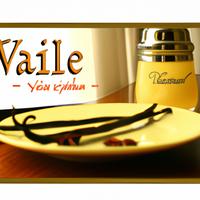
1 serving (5 grams) contains 12 calories, 0.0 grams of protein, 0.0 grams of fat, and 0.5 grams of carbohydrates.

Log this food in SnapCalorie

Nutrition Information
Calories |
571.4 | ||
|---|---|---|---|
% Daily Value* |
|||
| Total Fat | 0 g | 0% | |
| Saturated Fat | 0 g | 0% | |
| Polyunsaturated Fat | 0 g | ||
| Cholesterol | 0 mg | 0% | |
| Sodium | 23.8 mg | 1% | |
| Total Carbohydrates | 23.8 g | 8% | |
| Dietary Fiber | 0 g | 0% | |
| Sugars | 23.8 g | ||
| protein | 0 g | 0% | |
| Vitamin D | 0 mcg | 0% | |
| Calcium | 0 mg | 0% | |
| Iron | 0 mg | 0% | |
| Potassium | 23.8 mg | 0% | |
* Percent Daily Values are based on a 2,000 calorie diet. Your daily values may be higher or lower depending on your calorie needs.
Food Attributes
Source of Calories
About Vanilla flavouring
Vanilla flavouring is derived from the beans of the vanilla orchid, native to regions like Mexico and Madagascar. It comes in two primary forms: pure vanilla extract, made from natural vanilla beans and alcohol, and synthetic vanillin, which is often created from wood pulp or petrochemicals. Valued for its rich, sweet aroma and warm flavour, vanilla is a staple in baking, desserts, and beverages across global cuisines. Pure vanilla extract contains antioxidants, which may have potential health benefits, but it is often used in small amounts, contributing minimal nutritional value. Artificial vanilla options lack these nutrients and can include additives. Additionally, the sugar content in flavored syrups and processed products can impact health if consumed in excess. Whether pure or synthetic, vanilla elevates recipes with its natural sweetness, but moderation is key when combined with sugary or calorie-dense foods.



